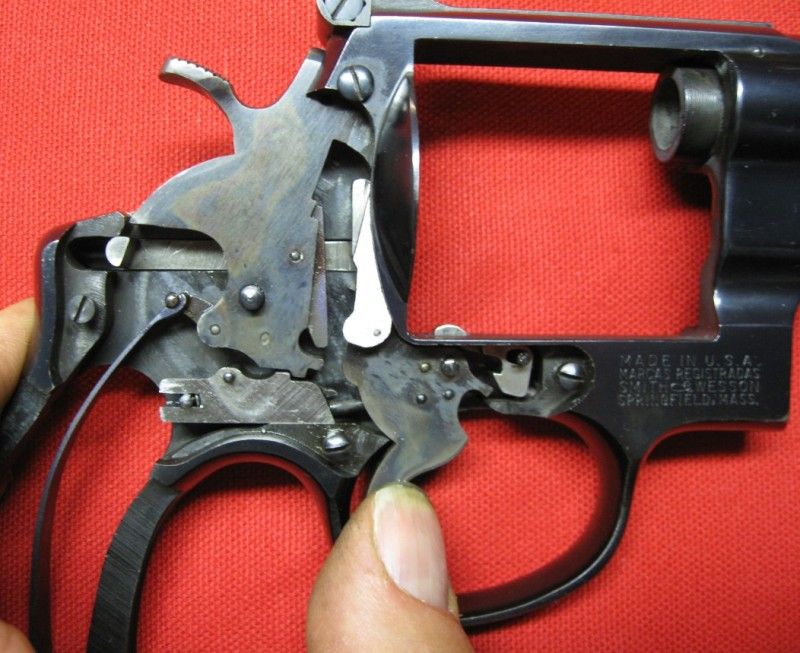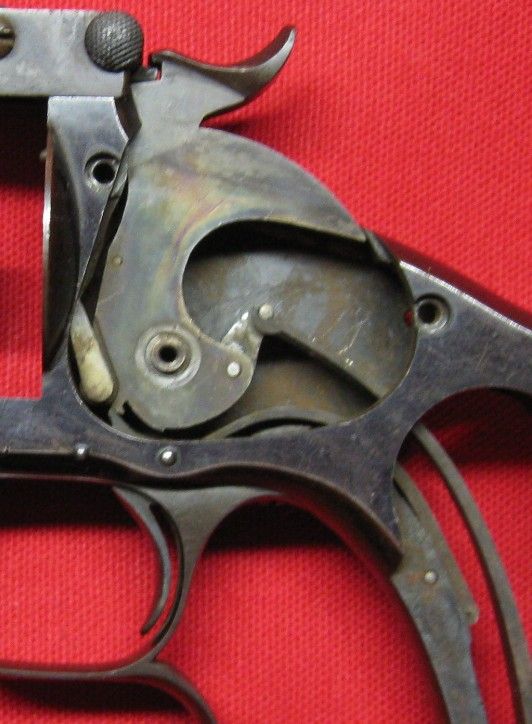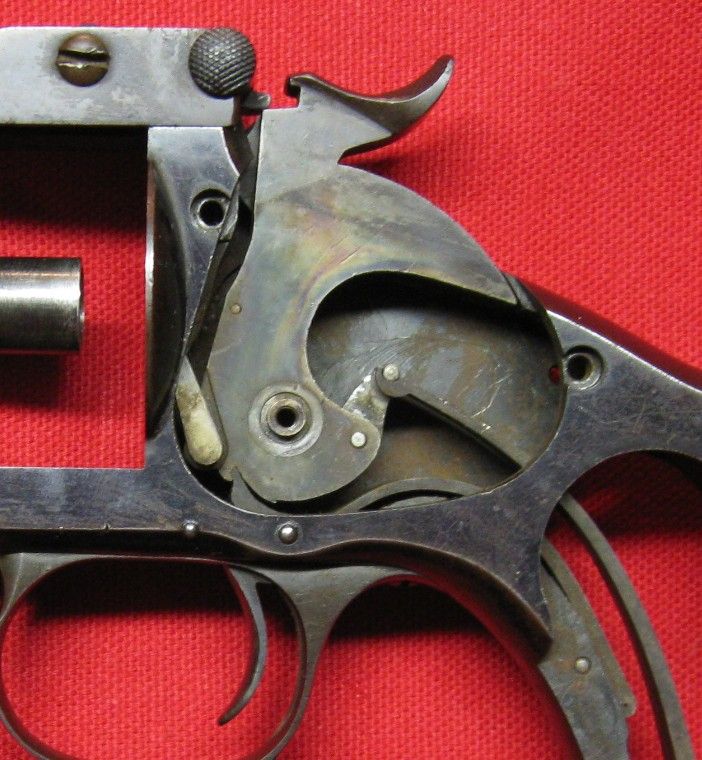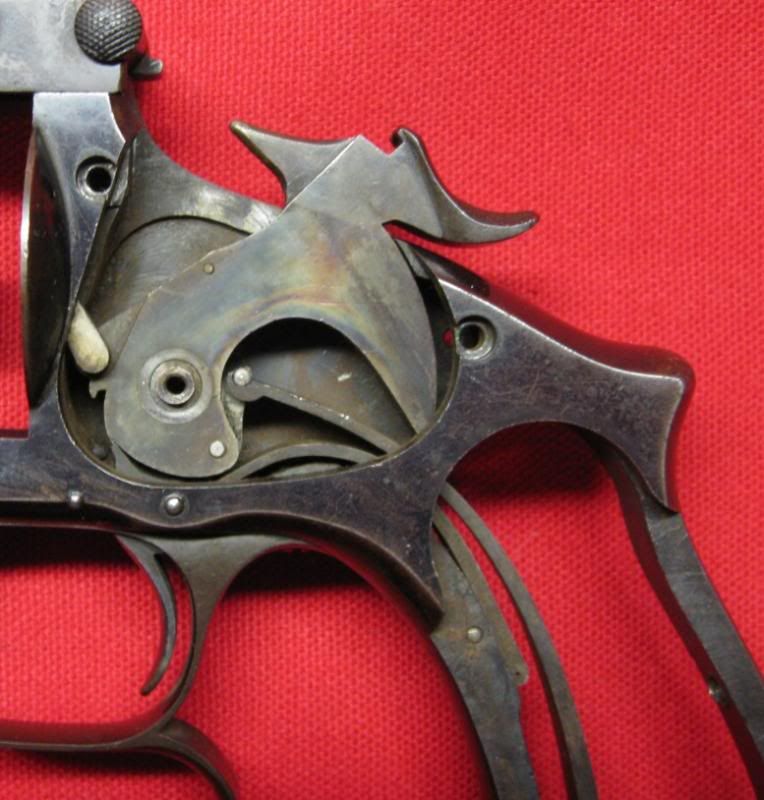Howdy
I always find photos to be a big help in explaining these concepts.
This is a photo of an older Smith that was made before hammer blocks were added to the design. The part that has the patent date on it is called the rebound slide. S&W incorporated the rebound slide into their revolvers in 1902 and they still use them. In this photo the rebound slide is in its furthest forward position, pushed there by the coil spring inside it. There is a slight hump at the bottom of the hammer, as well as a hump on the top of the rebound slide. In this photo the hump at the top of the rebound slide has wedged itself under the hump at the bottom of the hammer, forcing the hammer and firing pin back about 1/8". You can see the space in front of the hammer. The gun is incapable of firing in this condition. When the trigger is pulled or the hammer is cocked, the rebound slide is forced back pulling its hump out of the way so the gun can fire.

Sometime later, S&W decided to add an internal hammer block in addition to the hump on the rebound slide, to make their revolvers even safer. The hammer block was pinned inside a slot in the side plate.
This photo shows the hammer block pinned inside the side plate. It was made from a piece of spring steel. The arrow on the left is pointing to a ramp on the hand that would engage a tab on the hammer block. When the trigger rotated and the hand rose, the ramp on the side of the hand pushed the hammer block out of the way. Since it was spring loaded, when the hand returned to its normal position, the hammer block sprung out again to block the hammer.

This system worked out very well until World War Two. In a freak accident, a Victory Model Smith fell to the deck of a destroyer, landed on its hammer, and discharged, killing a sailor. It was a freak accident, but the Navy demanded S&W come up with a solution, which they did in a week's time. Here is the result, the modern S&W hammer block, which is still incorporated in all S&W revolvers today. When the hammer is cocked or the trigger is pulled, the pin on the rebound slide pulls the hammer block down diagonally away from the hammer, allowing the hammer to fall all the way. Notice in this photo, it is actually the hump on the rebound slide that is keeping the hammer rotated back slightly. The hammer block is actually a redundant safety, the hammer is not resting on the hammer block at all.
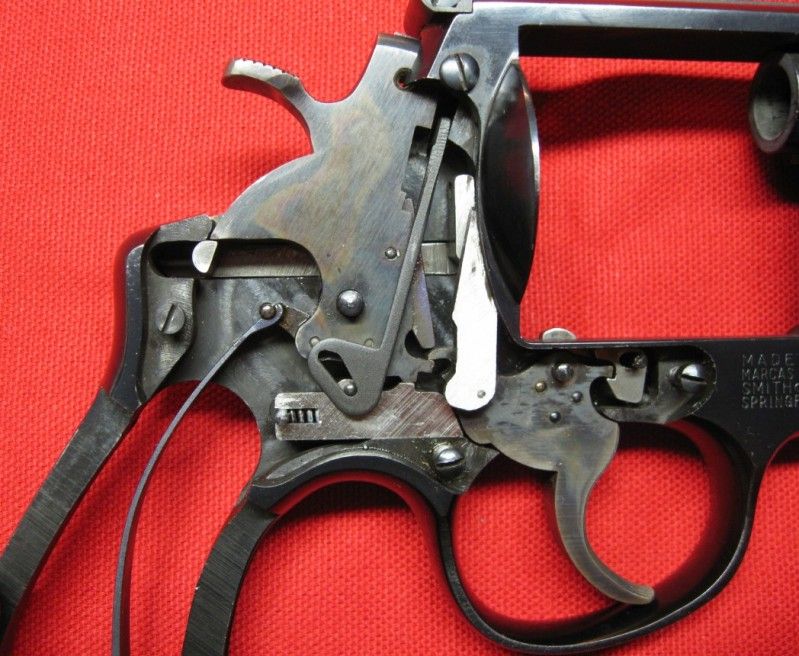
In this photo I have removed the hammer block in order to see what is going on underneath it. I am holding back the trigger. This keeps the rebound slide pushed back and the hammer is now free to fall all the way.
Gotta start another answer to show how unsafe a single action revolver was when fully loaded.





